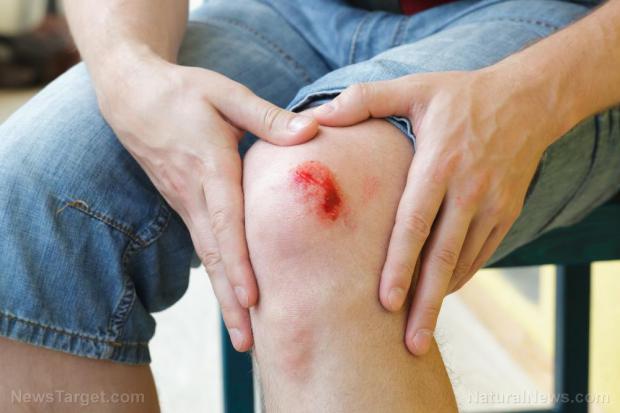
Breaking News
 Expect The Precious Metals Rally To Continue In 2026
Expect The Precious Metals Rally To Continue In 2026
 Watch: TSA Whistleblowers Expose Somali Cash Smuggling Operations At US Airports
Watch: TSA Whistleblowers Expose Somali Cash Smuggling Operations At US Airports
 MSM Panics After Nick Shirley Bombshell As CBS Pledges To Start Reporting Real News
MSM Panics After Nick Shirley Bombshell As CBS Pledges To Start Reporting Real News
 The Unnecessary Somali Scandal
The Unnecessary Somali Scandal
Top Tech News
 Laser weapons go mobile on US Army small vehicles
Laser weapons go mobile on US Army small vehicles
 EngineAI T800: Born to Disrupt! #EngineAI #robotics #newtechnology #newproduct
EngineAI T800: Born to Disrupt! #EngineAI #robotics #newtechnology #newproduct
 This Silicon Anode Breakthrough Could Mark A Turning Point For EV Batteries [Update]
This Silicon Anode Breakthrough Could Mark A Turning Point For EV Batteries [Update]
 Travel gadget promises to dry and iron your clothes – totally hands-free
Travel gadget promises to dry and iron your clothes – totally hands-free
 Perfect Aircrete, Kitchen Ingredients.
Perfect Aircrete, Kitchen Ingredients.
 Futuristic pixel-raising display lets you feel what's onscreen
Futuristic pixel-raising display lets you feel what's onscreen
 Cutting-Edge Facility Generates Pure Water and Hydrogen Fuel from Seawater for Mere Pennies
Cutting-Edge Facility Generates Pure Water and Hydrogen Fuel from Seawater for Mere Pennies
 This tiny dev board is packed with features for ambitious makers
This tiny dev board is packed with features for ambitious makers
 Scientists Discover Gel to Regrow Tooth Enamel
Scientists Discover Gel to Regrow Tooth Enamel
 Vitamin C and Dandelion Root Killing Cancer Cells -- as Former CDC Director Calls for COVID-19...
Vitamin C and Dandelion Root Killing Cancer Cells -- as Former CDC Director Calls for COVID-19...
Treating wounds: How to recognize and prevent wound infection

(Natural News) Can you recognize a wound infection — and do you know how to prevent it? These tips can help you keep a wound from getting infected.
When a disease-causing microbe grows within the injured skin, it may lead to an infection. The person may notice red streaks and increased heat on the skin around the wound.
The wound may release discharge and have an unpleasant odor. In addition to discomfort, redness, and swelling, the patient may also experience pain, chills, fever, nausea, and vomiting.
Thankfully, if the wound is minor or if the infection is mild, the patient may treat himself at home. (Related: Sugar: Cheap, effective wound treatment with a long shelf life.)
How to treat wounds at home
To treat wounds effectively, make sure that all the medical supplies and tools you will use are clean, dry, and disinfected. This includes the hands — wash them with soap and warm water before drying them.
Spend a few minutes running warm water over the cut or scrape. Clean the skin around the wound with warm, soapy water. Remember to keep soapsuds out of the wound.
Check the wound for debris and dirt that may carry bacteria. A person may remove those interlopers with a clean tweezer or with careful and gentle strokes using a light, moist cloth.
Spread a small amount of antiseptic ointment or petroleum jelly over the wound. Let the skin air out and dry before dressing it with a bandage or gauze.
Replace the wound dressing at least once a day. If it gets dirty or wet, remove the bandage at once. Take the chance to wash the wound with care before re-covering it.
Avoid applying chemicals that may irritate the skin and aggravate the wound. Hydrogen peroxide, iodine, and some antiseptic ointments are common examples of these.
We are all guilty of picking scabs, but doing so makes the injured skin more likely to develop scars. It also slows down the recovery process and may even cause infections.
Visit a health care provider if a wound fails to heal within one or two days.
Preventing wound infections
The first thing anyone must do to avoid infection is to disinfect a wound and keep it clean. Even if the cut or scratch is small, people must clean it as soon as possible.
Start the disinfection process by pouring clean water over the wound for several minutes. Next, wash the skin surrounding the wound with warm water and soap.
In the absence of clean water, alcohol wipes will suffice.



